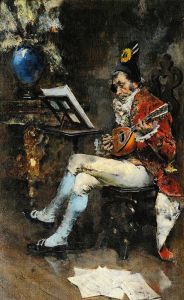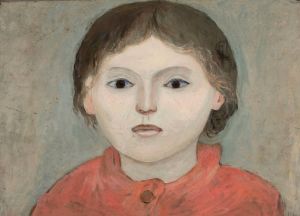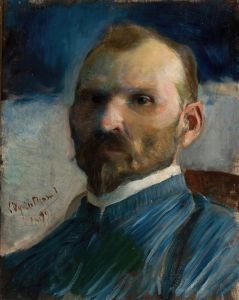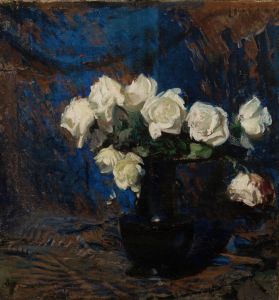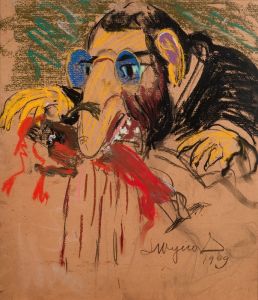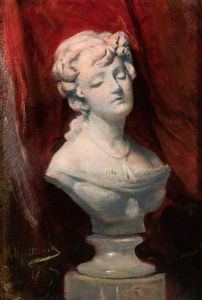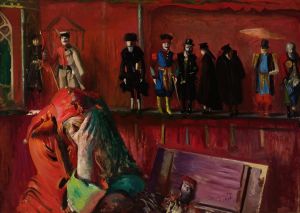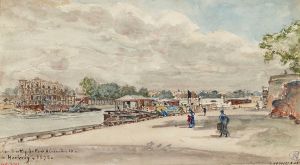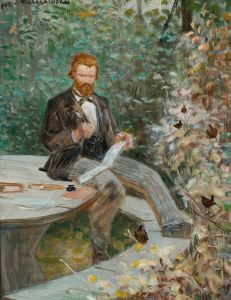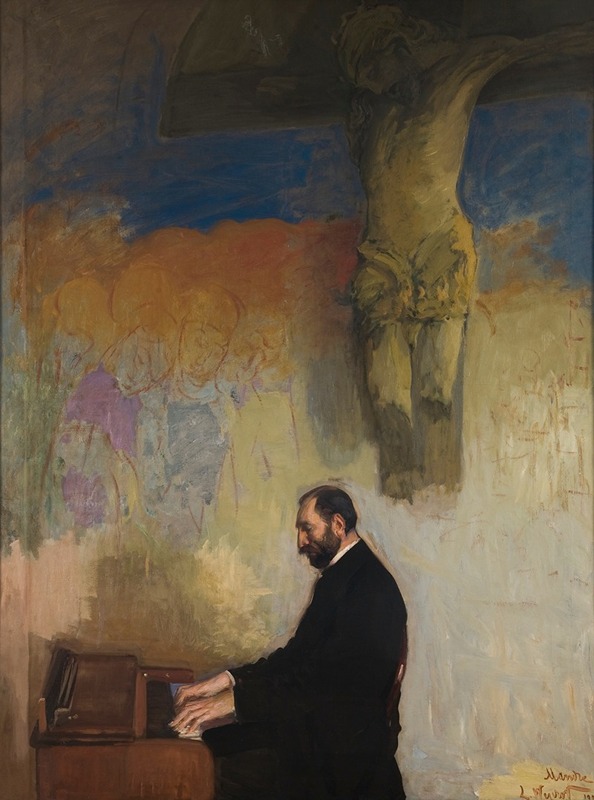
Portrait of Feliks Jasieński at the Organ
A hand-painted replica of Leon Wyczółkowski’s masterpiece Portrait of Feliks Jasieński at the Organ, meticulously crafted by professional artists to capture the true essence of the original. Each piece is created with museum-quality canvas and rare mineral pigments, carefully painted by experienced artists with delicate brushstrokes and rich, layered colors to perfectly recreate the texture of the original artwork. Unlike machine-printed reproductions, this hand-painted version brings the painting to life, infused with the artist’s emotions and skill in every stroke. Whether for personal collection or home decoration, it instantly elevates the artistic atmosphere of any space.
Leon Wyczółkowski's "Portrait of Feliks Jasieński at the Organ" is a notable work by the Polish painter, known for his contributions to the Young Poland movement and his diverse artistic style. Wyczółkowski, born in 1852, was a prominent figure in Polish art, and his works often reflect a deep engagement with both realism and impressionism. This particular painting is a testament to his skill in portraiture and his ability to capture the essence of his subjects.
Feliks Jasieński, the subject of the painting, was a significant cultural figure in Poland. Born in 1861, Jasieński was a renowned art collector, critic, and patron of the arts. His contributions to the Polish art scene were substantial, and he played a crucial role in promoting modern art in Poland. Jasieński's extensive collection included works by both Polish and international artists, and he was known for his support of contemporary art movements.
The painting itself depicts Jasieński seated at an organ, a setting that suggests his deep appreciation for music and the arts. Wyczółkowski's portrayal of Jasieński is both intimate and detailed, capturing not only his physical likeness but also hinting at his personality and interests. The use of light and shadow in the painting highlights Wyczółkowski's mastery of technique, creating a sense of depth and realism that draws the viewer into the scene.
Wyczółkowski's choice to depict Jasieński at an organ is significant, as it underscores the cultural and intellectual milieu in which Jasieński operated. The organ, a complex and historically rich instrument, symbolizes a connection to both tradition and innovation, much like Jasieński's own approach to art collection and patronage. This setting may also reflect Jasieński's personal interests and his role as a mediator between different art forms and cultural expressions.
The painting is part of a broader body of work by Wyczółkowski that includes portraits of other notable figures of his time. His ability to convey the character and status of his subjects made him a sought-after portraitist, and his works are celebrated for their psychological depth and technical proficiency. "Portrait of Feliks Jasieński at the Organ" is an exemplary piece that showcases Wyczółkowski's talent in capturing the essence of his subjects while also providing insight into the cultural landscape of Poland during the late 19th and early 20th centuries.
Today, Wyczółkowski's works, including this portrait, are held in high regard and can be found in various museums and collections, reflecting their enduring significance in Polish art history. The painting not only serves as a visual record of a key figure in Polish culture but also as a testament to the rich artistic dialogue of the period. Through his depiction of Jasieński, Wyczółkowski offers a glimpse into the vibrant world of Polish art and the individuals who shaped its course.





